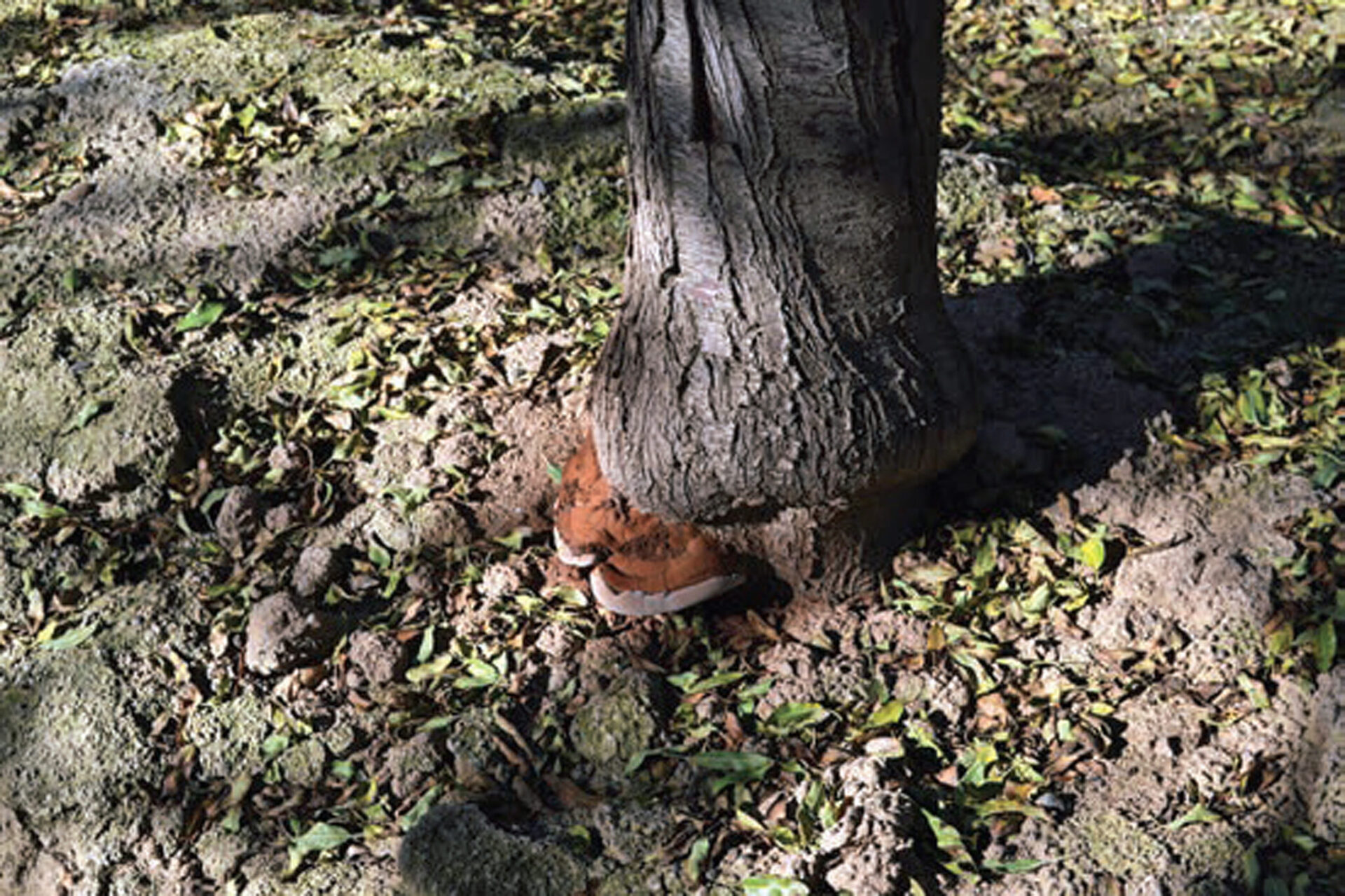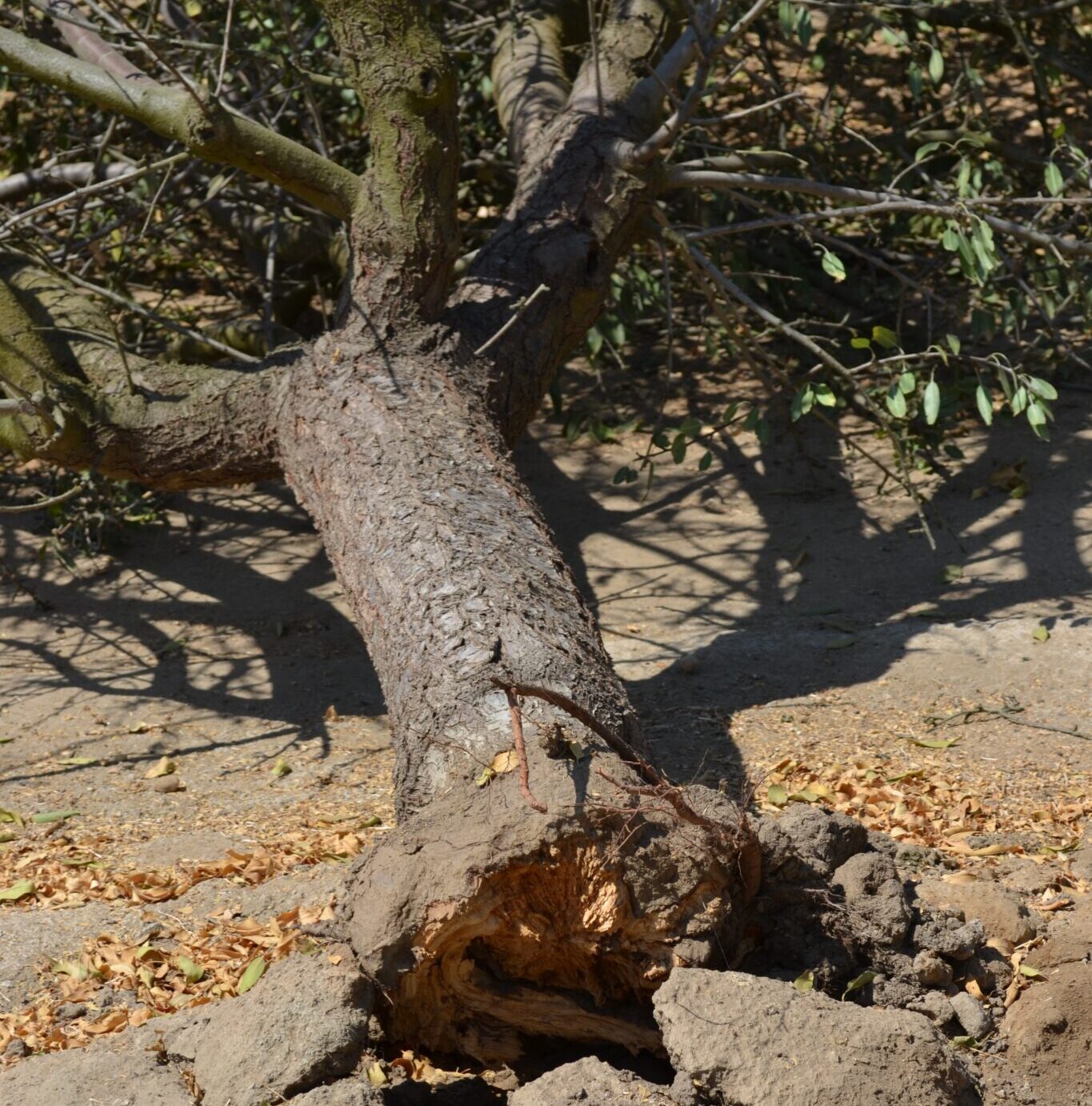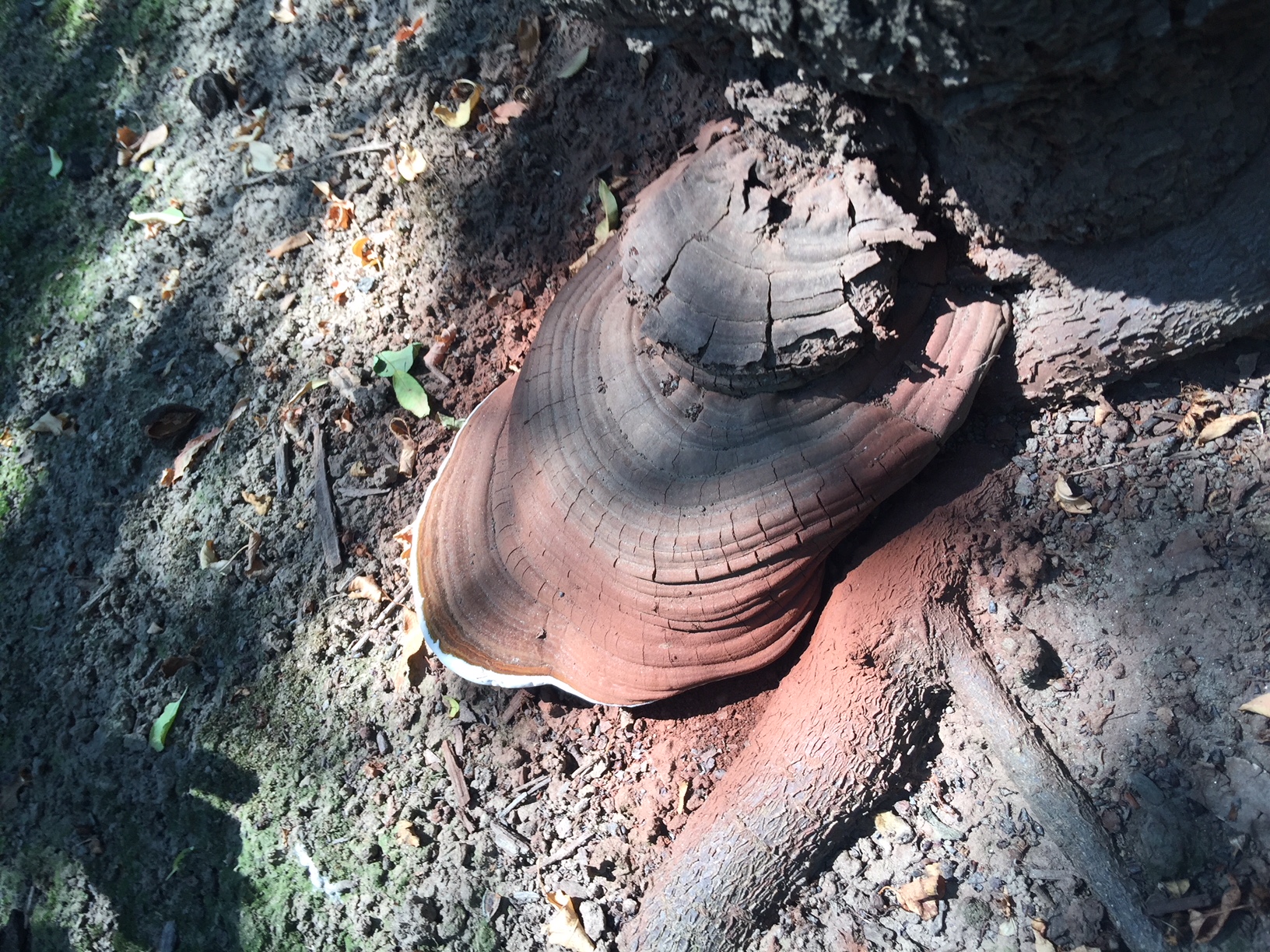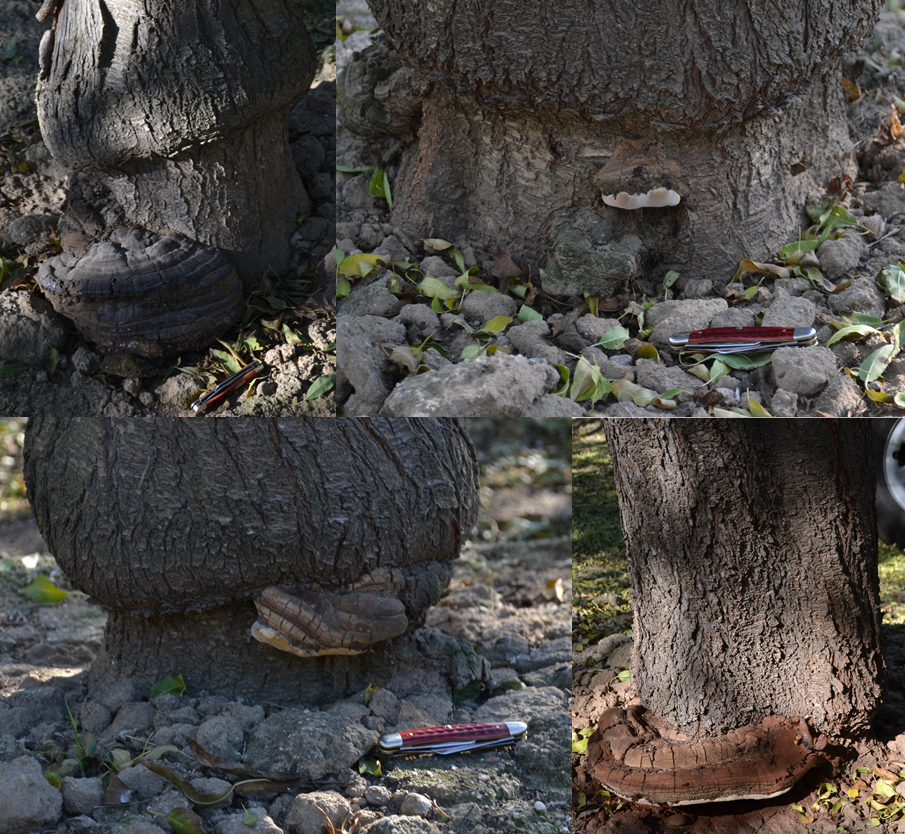
Until 2016, when UC Davis plant pathologists David Rizzo and Andrew “Bob” Johnson identified a species of the Ganoderma fungus previously unreported in the state, butt rot in almonds was considered a problem of older orchards.
Since then, the newcomer, Ganoderma adspersum, has been found infecting orchards as young as four years old and has been responsible for a number of growers removing younger orchards because of extensive tree loss.
So far, G. adspersum infections have been confirmed in almond orchards from Madera County south to Kern County. Reports also are limited to trees planted on Nemaguard rootstock.
More recently, what appears to be G. adspersum has been found infecting a rose bush in the Sacramento Valley and a walnut tree, said UC Davis doctoral student Daisy Hernandez, who works in the Rizzo Lab at UC Davis. Researchers currently are conducting pathogenicity tests and Koch’s postulates to confirm that the fungus is indeed responsible for the infections.
As part of her doctoral dissertation, Hernandez will begin a spore survey of orchards this spring that she hopes will shed light on how environmental conditions affect fungi sporulation and sporulation timing.
Her project involves surveying orchards once a month for an entire year. Two young orchards of about five years old will be compared to two older orchards of about 17 years old. They will be in different counties, so Hernandez can monitor how different environmental conditions, such as temperature, precipitation, timing of rainfall, dew point and other factors, affect Ganoderma sporulation.
More than two dozen orchard owners volunteered to participate in the spore survey after Hernandez sent out a request in late 2020. Accompanying it was a flier about Ganoderma infections that generated additional grower questions.
“Many growers didn’t realize they had Ganoderma until they saw the flier and the pictures and the description,” she said.
In a separate study, Hernandez plans to inoculate almond and walnut rootstock with Ganoderma and crown gall under controlled field conditions to gauge their susceptibility. She said she hoped the data gained from her studies will lead to eventual management strategies for growers.
“In order to get to the control strategy, or possibly “Z” in the alphabet, we have to pin down “A-B-C” first before we can get to Z,” Hernandez said.
Her research is being sponsored by the Almond Board of California.
Phoebe Gordon, a UC orchard systems advisor in Madera and Merced counties, said she hoped the results of Hernandez’s studies will help answer questions she receives from growers.
“We really don’t have many suggestions,” she said. “But if you removed your orchard due to G. adspersuum, it might be wise to stay away from replanting with Nemaguard—that’s just a guess based on the tiny about of information we know.”
The rootstock has been popular in the southern San Joaquin Valley because it is one of the least decayable, according to Johnson, who studied the pathogen as part of his doctoral thesis in plant pathology at UC Davis. But Nemaguard has thin bark, likely increasing its woundability and providing entryways for G. adspersum.
If an almond orchard is in its 20s and a few trees blow over, most growers don’t think much of it, Gordon said. But when trees much younger begin to topple, it catches their attention.
“I think it’s something that’s going to make people pay more attention to wood rot fungi,” she said. “We need to know more about it to be able to find out how to manage it. From the UC side, we don’t really know how many orchards are affected by it and how widespread it is.”

Root Rot, Heart Rot and Butt Rot
Native to Europe, G. adspersum appears more aggressive than G. brownii, a related fungus endemic to California that tends to infect older orchards on the downhill side, according to research by Rizzo and Johnson. In Europe, G. adspersum infects a wide range of both hardwood and coniferous hosts.
In California, G. adspersum appears to have displaced G. brownii, now accounting for more than 90% of all samples of butt rot in almonds.
Butt rot can be differentiated from root rot and heart rot by the part of the tree it infects.
Armillaria root rot, also known as oak root fungus, attacks the cambium and sapwood, eventually girdling the tree and leading to death. It is spread primarily by contact between healthy and diseased roots and doesn’t require a wound entryway. Trees do not blow over and remain standing until they are cut down. Infections typically occur in specific patches within the orchard.
Heart rot, caused by Phellinus tuberculosus, infects the canopy and trunk, decaying heartwood and sapwood and reducing structural stability. It may result in trunk and limb breakage.
Heart rot is spread by airborne spores and needs a pruning wound to provide an infection entryway. Because of the trend toward reduced pruning in almonds, it is not as widespread a problem as in prunes.
Unlike root rot and heart rot, butt rot affects the below-ground portion of the trunk from which the roots radiate. Butt rot fungi decay the tree by moving upward and moving from the inside out. Infections rarely extend more than 12 to 18 inches above the soil line and may go undetected without visual symptoms until the tree snaps off at the soil line during strong winds.
When trees are wounded, they erect high-lignin reaction wood around the entryway to try to contain potential invaders. But G. adspersum can eat through the reaction wood, overcoming the tree’s defenses, according to Johnson’s research. Tree structure is compromised through delignification.
The normally tan to brown lignin turns a whitish color, resembling brittle Styrofoam. With a weakened support system, trees are easily toppled by strong winds.

Young Orchards Affected
The belief that butt rot was only a problem of older orchards changed in 2016 when a 9- to 10-year old orchard in Kings County was diagnosed with it. During a two-year span, each block experienced between 8% and 13% tree loss. Subsequent sampling put the infection level of the remaining trees at more than 50%, and the orchard was eventually removed.
The discovery marked the first time G. adspersum had been found in the state infecting young orchards, but it was not a lone incident. As of July 2020, 68 younger aged orchards, including one 4-year-old orchard, in Madera, Fresno, Kern and Tulare counties have been identified with G. adspersum butt rot infections. Many were eventually removed.
After prolonged infection, shelf-like conks, known scientifically as basidiocarps, may protrude from the trunk near the soil line. G. adspersum conks typically have a white border and may take on a rusty red color when sporulating.
Airborne spores are most likely the primary source of inoculum for G. adspersum infections, with a hand-sized conk capable of producing trillions of spores annually.
Sporulation is believed to occur year-round.
What Hernandez hopes to pin down with the spore survey is the time period in which most sporulation occurs. Having that information could help focus control measures during the most infectious periods.
“That way we won’t be wasting our resources to control it throughout the year,” she said. “Maybe we can pin it down to a few months or a few weeks when it’s the highest infection.”
Researchers hypothesize that harvesting and the associated blowing help disperse spores throughout orchards. As part of her spore survey, Hernandez will monitor spore traps in participating orchards during harvest to validate the belief.
“It seems to be the most probable situation, that’s why we’ve said it with confidence,” she said. “But with anything, it’s always good to have data to back it up.”
The spores need an entryway into the tree, and wounds caused by shakers, other machinery or pests appear the most likely. Infections do not appear to move through root-to-root contact between trees, although this has not been ruled out.











